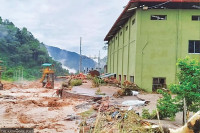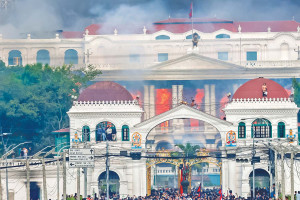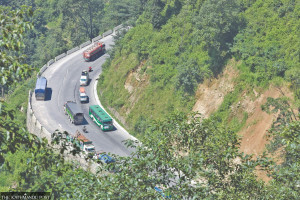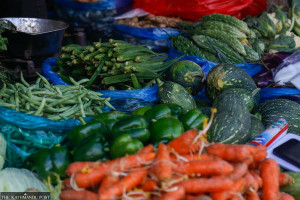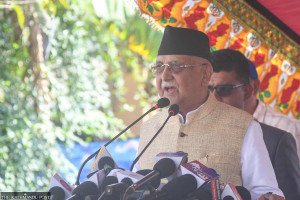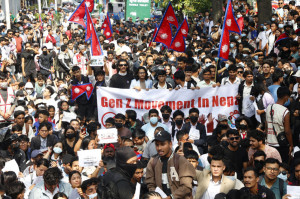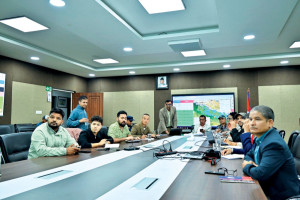Money
Collection of 15 taxes, fees proposed for local bodies
The government has proposed that newly-formed local bodies be allowed to generate revenue by imposing 15 different types of taxes and fees to enable them to cover various recurrent and capital expenses.
Rupak D. Sharma
The government has proposed that newly-formed local bodies be allowed to generate revenue by imposing 15 different types of taxes and fees to enable them to cover various recurrent and capital expenses.
If the proposal is approved, village councils, municipalities and sub-metropolitan and metropolitan cities will be able to slap property, house rent, real-estate registration, vehicle, land, entertainment, advertisement, business and hoarding board taxes.
They will also be allowed to collect fees from various types of services, tourism, vehicle parking, rent, collection of herbs and scrap, and operation of carts, rickshaw, cable cars and boats.
In addition to these, the local bodies can also impose fines as per the prevalent law.
These taxes, fees and fines, however, should not violate provisions of the national economic policy, or affect movement of goods, capital and labour markets, and neighbouring provinces and local bodies, says the draft of the Intergovernmental Fiscal Transfer Bill prepared by the Ministry of Finance.
The draft bill, a copy of which has been obtained by the Post, has identified these potential income sources for local bodies so that they could ultimately become financially independent and fund development activities on their own.
This initiative to empower the local bodies is expected to institutionalise federalism in the country as envisaged by the constitution promulgated in September 2015.
Nepal formally embraced federal setup in March by dissolving over 3,000 bodies in local, district, zonal and regional levels.
These bodies have now been replaced by 744 new local units and various district coordination committees.
Elections were recently held in 617 of 744 local bodies in six of the seven provinces. The government is planning to hold local level elections in one province soon, while provincial and national elections are scheduled to be held within January.
To enable these bodies at local, state and central levels to execute various tasks smoothly, the draft bill has proposed to divide revenue generated from value added tax, and excise duties levied on domestic products among federal, provincial and local governments.
As per this provision, local bodies will get 15 percent of the income generated from VAT, and excise duties imposed on domestic products. Of the remaining 85 percent, 7 percent will go to provinces and 78 percent to the federal government.
The bulk amount allocated for 744 local bodies and 7 provinces will be distributed every month based on indicators and formula devised by the National Natural Resource and Fiscal Commission, says the draft bill, which has been registered in Parliament.
On top of this, local bodies will also get royalties obtained from use of natural resources, namely mountains, hydropower, forests, and mines and minerals.
The draft bill has proposed extending 5 percent of the royalty generated from use of these resources to local bodies, 10 percent to provinces and 85 percent to the central government.
“If the same natural resource has been used by more than one province or local body, the royalty will be distributed based on impact on affected areas,” says the draft bill.
To further strengthen local bodies and provinces financially, the draft bill has also proposed to extend four types of grants. They are: fiscal equalisation, conditional, matching and special.
Fiscal equalisation grant will be extended on the basis of fund requirement of local bodies and provinces, and their ability to generate revenue.
Conditional grant will be provided in accordance with situation of infrastructure, and national policies, programmes, norms and standards.
Both these grants will be extended to local bodies and provinces based on the recommendation made by the National Natural Resource and Fiscal Commission.
These two grants have already been allocated for newly formed local bodies through the budget of the next fiscal year presented in Parliament on May 29.
The other two grants-matching and special-will be made available by the central government on the basis of need of provinces and local bodies.
The matching grant, for instance, will be provided to provinces and local bodies for infrastructure projects based on feasibility and cost of projects.
Factors such as project’s impact, availability of financial, physical and human resources required to implement the project, and the project’s importance will also be taken into account while extending the matching fund.
Special grant, on the other hand, will be extended to provide basic public services, such as education and health, and to promote socio-economic development in communities left behind.
If these financial resources are not adequate, provinces and local bodies can float instruments to raise public debt.
But central government’s permission is mandatory to raise the debt from the domestic market. Also, provinces and local bodies can borrow money from the central government if they are short of funds, says the draft bill.
Based on these income sources and expenses that are likely to be incurred, local bodies must present their annual budget within 15th day of the Nepali calendar month of Asar (end of June) in village or city council. Provinces, on the other hand, will have to present annual budget in the provincial council within the 1st day of the Nepali calendar month of Asar (mid-June).
“If the budget does not get approved within the start of the fiscal year, the central government, provinces and local bodies can spend up to a third of the proposed budget as a stopgap measure,” says the draft bill.
Along with the budget, the central, provincial and local governments should also introduce medium-term expenditure framework (MTEF), comprising expenditure projection for the next three years.
The MTEF is a document that links policies and plans envisaged by different levels of governments with the budget. Inclusion of a programme in the MTEF guarantees funds even after one fiscal year has elapsed.
Highlights of the draft bill
- Central government allowed to collect 14 taxes and 8 fees
- Provincial government allowed to collect 8 taxes and 2 fees
- Local government allowed to collect 9 taxes and 6 fees
- 15 percent of income generated from VAT, and excise duties imposed on domestic products to go to local bodies, 7 percent to provinces and 78 percent to federal government
- 5 percent of royalty generated from use of natural resources, namely mountains, hydropower, forests, and mines and minerals, to go to local bodies, 10 percent to provinces and 85 percent to central government
- Provinces and local bodies to get four types of grants: fiscal equalisation, conditional, matching and special
- Provinces and local bodies allowed to float instruments to raise public debt
- Mandatory for local bodies to present annual budget within 15th day of Nepali calendar month of Asar (end of June)
- Mandatory for provinces to present annual budget within the 1st day of the Nepali calendar month of Asar (mid-June)
- Mandatory for central, provincial and local governments to introduce medium-term expenditure framework comprising expenditure projection of three years




 17.12°C Kathmandu
17.12°C Kathmandu


